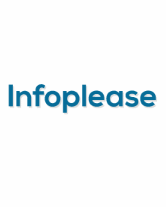The banning of books and other forms of censorship are not new. Since at least the fourth century B.C., some groups and individuals have encouraged the banning or outright destruction of reading material in the name of morality or for political or religious reasons. Here is a list of the most frequently attacked children's books in recent years and the objections to them.
| Book | Anne Frank: The Diary of a Young Girl |
| Reason | Too depressing. |
| Book | Blubber, by Judy Blume |
| Reason | The characters curse and the mean-spirited ringleader is never punished for her cruelty. |
| Book | Bony-Legs, by Joanna Cole |
| Reason | Deals with subjects such as magic and witchcraft. |
| Book | The Chocolate War, by Robert Cormier |
| Reason | Offensive language. |
| Book | Confessions of an Only Child, by Norma Klein |
| Reason | Use of profanity by the lead character's father. |
| Book | Harriet, the Spy, by Louise Fitzhugh |
| Reason | Teaches children to lie, spy, talk back, and curse. |
| Book | A Hero Ain't Nothin' but a Sandwich, by Alice Childress |
| Reason | Anti-American and immoral. |
| Book | The House without a Christmas Tree, by Gail Rock |
| Reason | Uses the word damn. |
| Book | In a Dark, Dark Room, and Other Scary Stories, by Alvin Schwartz |
| Reason | Too morbid for children. |
| Book | In the Night Kitchen, by Maurice Sendak |
| Reason | Nudity; Mickey loses his pajamas during his fall in the kitchen. |
| Book | A Light in the Attic, by Shel Silverstein |
| Reason | A suggestive illustration that might encourage kids to break dishes so they won't have to dry them. |
| Book | Sylvester and the Magic Pebble, by William Steig |
| Reason | The characters are all shown as animals; the police are presented as pigs. |




